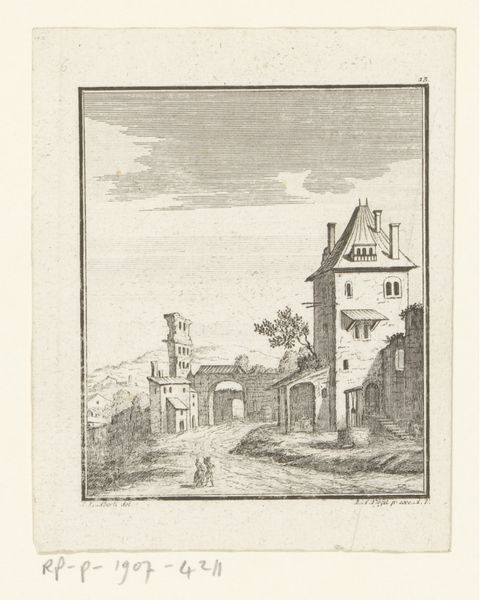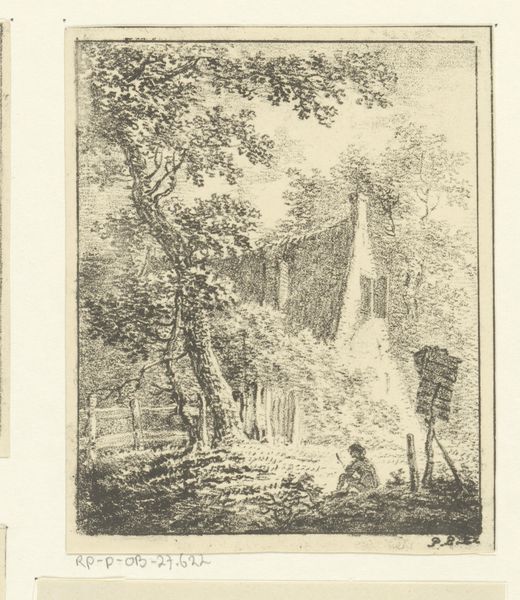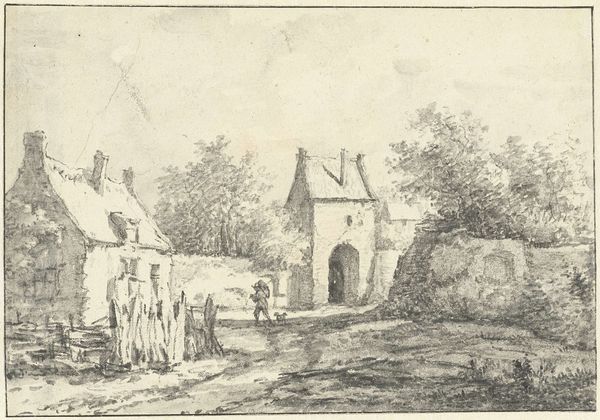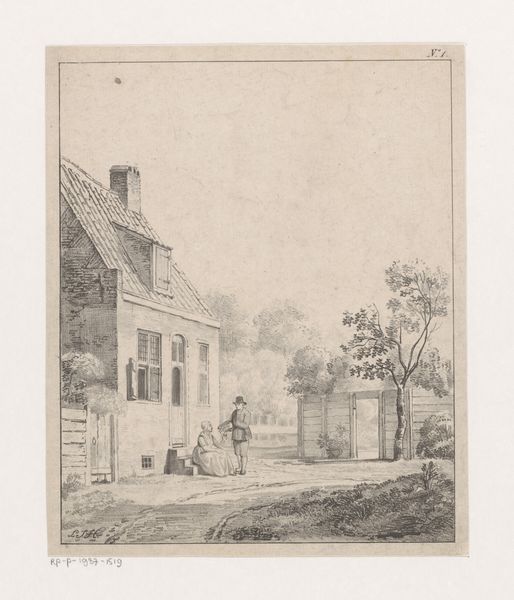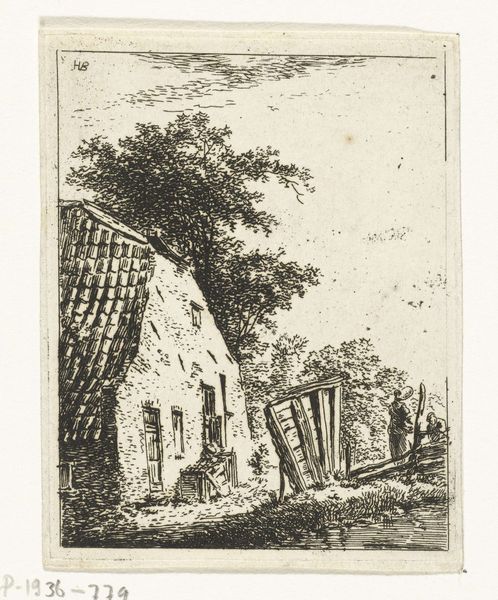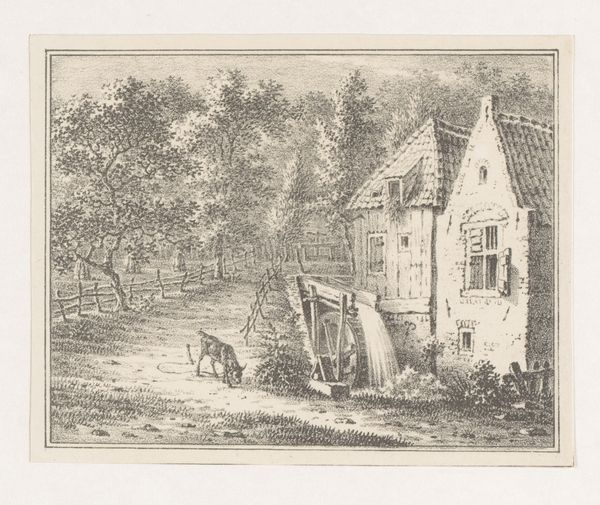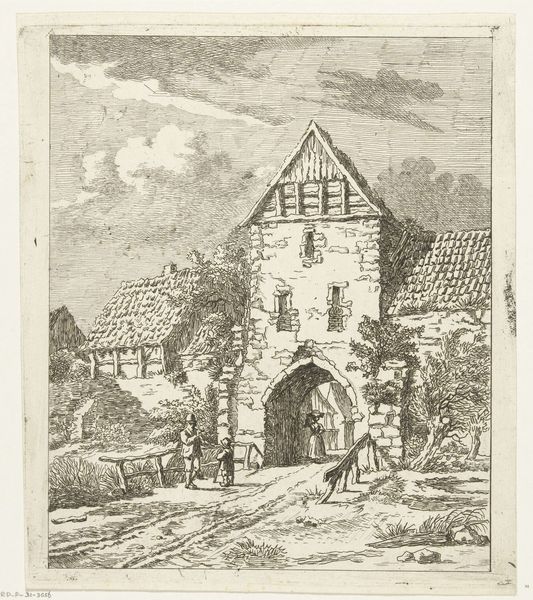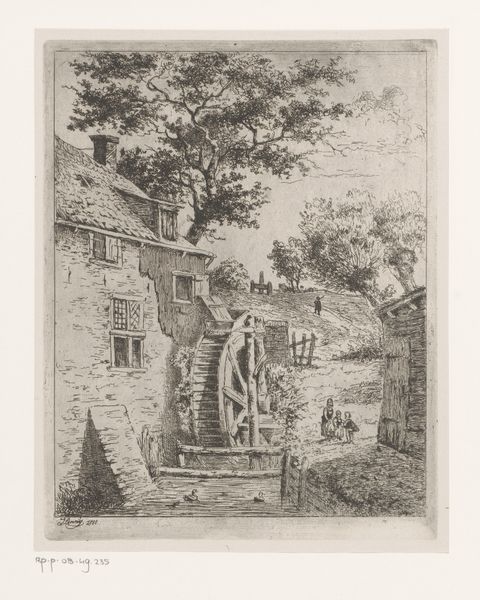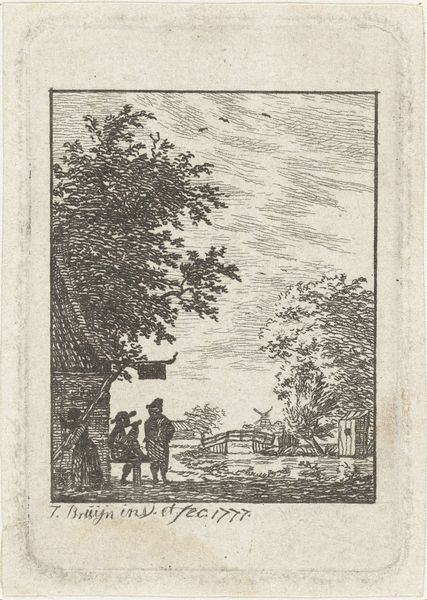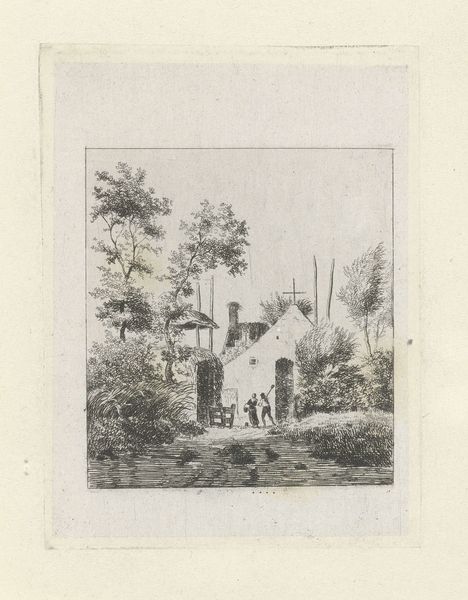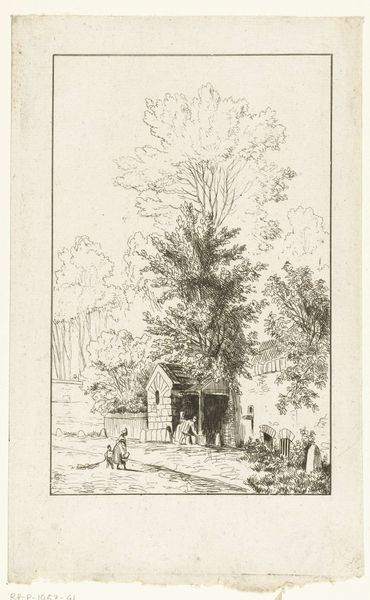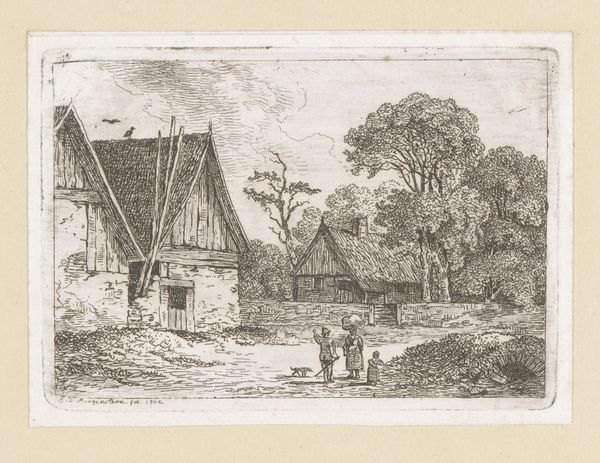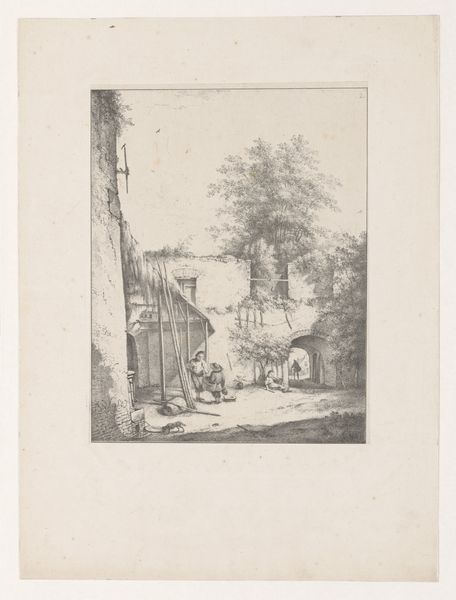
print, engraving
#
dutch-golden-age
# print
#
pen illustration
#
pen sketch
#
landscape
#
engraving
#
realism
Dimensions: height 170 mm, width 128 mm
Copyright: Rijks Museum: Open Domain
Curator: This engaging print is titled "In Overveen bij Haarlem," created before 1810 by Hermanus van Brussel. It's an engraving, a masterful work in black and white. Editor: It feels… humble, in a way. There’s a domestic quality to it, a sort of worn, rustic feeling. The textures feel so real, I can almost feel the rough brick. What do you think about that visual atmosphere? Curator: That’s an excellent observation. These were tumultuous times, and the "Dutch Golden Age" style, even then, would've been laden with nostalgic significance. There's a simplicity in the composition, very different than history paintings commissioned by royalty. The everyday quality you perceive probably resonated even more during this work’s time. Editor: The central placement of the laborers—it's a simple narrative, but their task seems infused with meaning. It’s a strong symbol of working life. Their posture suggests toil and, in that, there’s dignity. Do you feel the figures stand out as meaningful? Curator: Absolutely. By portraying the laboring class in a natural setting, Van Brussel implicitly elevated their status. He draws from Dutch Realism; his visual vocabulary celebrates ordinary people and rural existence, perhaps questioning societal norms of the time. Editor: This is interesting. I hadn’t considered that it's more than just a visual scene—the tree on the side, partially covering the figures almost feels like a visual signifier, like nature is participating and legitimizing this act of hard labor. The door itself that they are holding also appears slightly tilted; it doesn't offer easy closure. I wonder if he meant to emphasize disruption through its symbolic precariousness. Curator: That interpretation fits well with the social and political climate. Visual artists weren't working in a vacuum. While seemingly simple, this print is layered with the quiet revolutionary spirit that defined the art world's ongoing dialogue with the sociopolitical structure. Editor: Examining it this way truly unveils how even an image of simple, everyday folk moving something like a door represents profound layers of human activity, resistance, and reflection. I hadn't quite looked at it like that initially! Curator: I’m glad to have offered a different angle; that's what makes understanding history so fascinating.
Comments
No comments
Be the first to comment and join the conversation on the ultimate creative platform.
